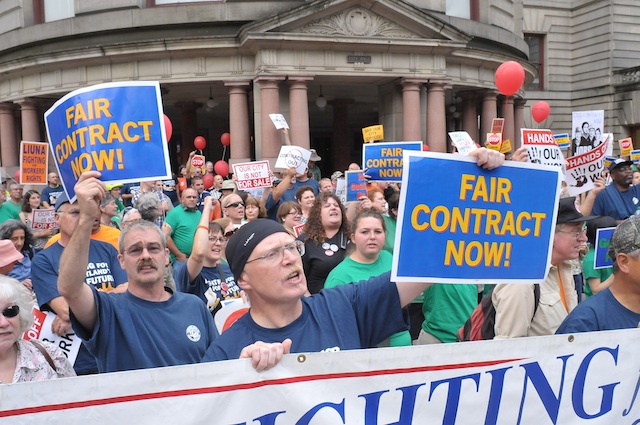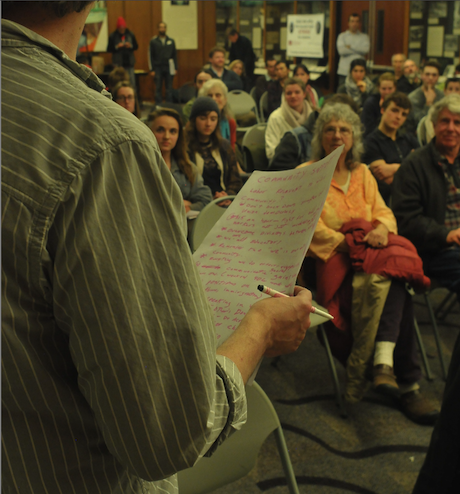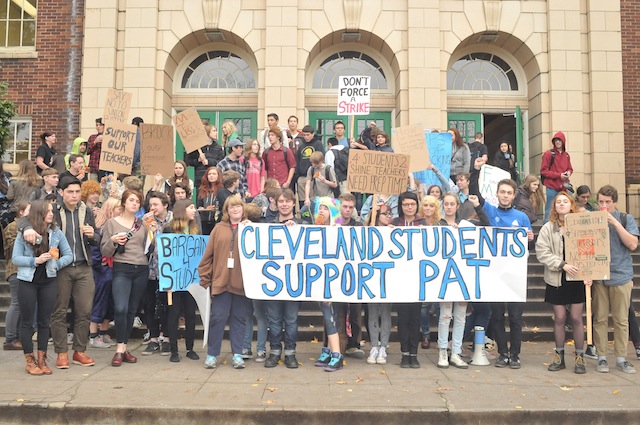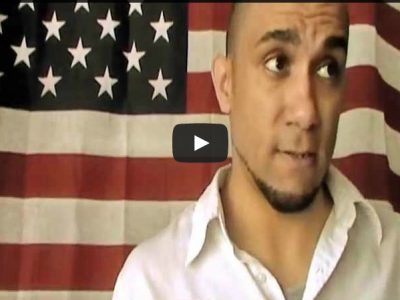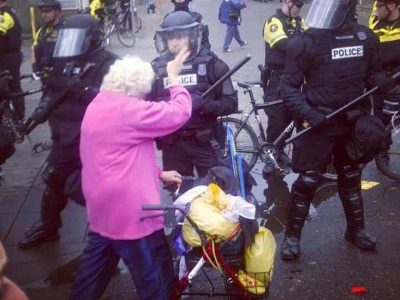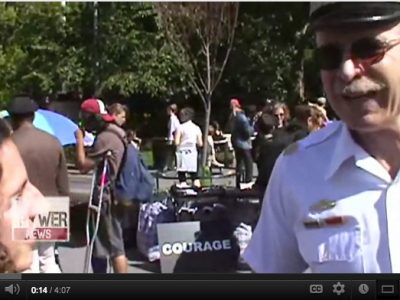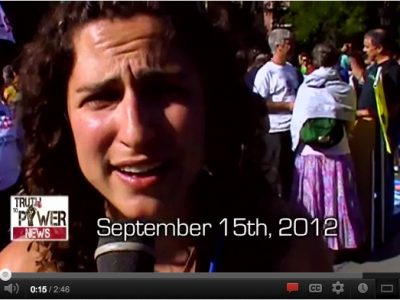Story and photos by Pete Shaw
When workers are fighting for their rights and dignity–and they are always fighting for those–the three most important words are solidarity, solidarity, and solidarity. With the possibility of at least three major strikes hitting Portland in the next few months, speakers at a recent Strikes on the Horizon forum held at Portland State University kept emphasizing the necessity of solidarity.
What made the use of that word so refreshing was the great expanse it covered. Too often, when unions and other groups speak of solidarity, it is used insularly–members of an individual union must stick together to fight for a particular contract. What emerged from the forum was an understanding of solidarity as a value that must be nurtured and extended every day–not just during contract battles–and that it must include community members outside of the union hall..
The unions facing strikes are Portland Association of Teachers (PAT), the Portland State University American Association of University Professors (PSUAAUP), the bus drivers who deliver students to and from their homes, and the member unions of the District Council of Trade Unions (DCTU). They are in various stages of their struggles. For example, the PAT is in mediated negotiations with the Portland Public Schools (PPS) Board of Education, while the leaders of the DCTU unions have sent the City of Portland’s contract proposal to their members for a vote.
Reynolds School District teacher Emily Crum moderated the event. She began by talking about the successful 2012 Reynolds teachers strike. That victory, Crum said, was due to two factors. First, the teachers voted to strike before the district imposed the contract upon them. “We decided to take action,” she stated, “before action was taken on us.” The timing was crucial because summer was approaching, and if the Board imposed their contract over the break, the union would lack the momentum and strength it had been gathering.
The other important factor in their victory was the support the teachers received from students, parents, and community members. That solidarity did not come on the wind, but was gained through reaching out and connecting.
The teachers went on strike in May, and won five days later. Since then, said Crum, the union has organized around social justice movements, such as supporting the Wal-Mart workers who went on strike.
Jose Padin of the PSUAAUP then spoke about the PSU professors’ struggle with an administration that has “no interest in any sort of education that doesn’t offer a profit.” Some of the fallout from the misplaced values of the PSU administration has been increased tuition and fewer full-time professors. According to Padin, the yearly payroll of PSU’s president and top management has increased by $5 million, while the average faculty salary is $38,000 per year. Padin credited this drive toward education as a profit-making exercise to “growing inequality and a class hellbent on destroying good jobs and hellbent on destroying public everything.”
Meanwhile, the teachers at PPS also have been waging a high profile campaign against an administration that places little value on what education can do for students. Adam Sanchez of the PAT connected Oregon’s low corporate tax rates with its large class sizes, finding grim amusement that while Governor Kitzhaber called a special session of the Oregon legislature to create a tax break for Nike, nothing has been done to decrease class sizes. Such priorities–placing private profit above the well-being of public institutions–has led directly to the school board’s efforts to micromanage teachers–turning them from educators to automatons who no longer teach children to think, but to do as they are told.
To gain traction in a positive direction, PAT recently offered its program for The Schools Portland Students Deserve, modeled on the Chicago Public Schools teachers’ plan, which seeks a school environment that focuses on instructing students according to their needs and interests, not to pass standardized tests. Essential to this is creating equitable schools that serve communities rather than administrators and private corporations.
Both the PSUAAUP and the PAT have not been alone in their struggles. At PSU the Associated Students of PSU and the PSU Action Committee have been standing behind their professors. Cameron Frank of the PSUAC described the administration as “so out of touch with the campus community.” Both groups have taken it upon themselves to educate the PSU student body as to what is at stake and where the administration and professors stand on the issues.
Meanwhile, the PAT has found support from students. The Portland Student Union has walked out of class, taken over a January 13 school board meeting, and set forth its own vision for Portland’s schools, one that works with teachers and members of the community. The PAT’s inclusive model of organizing has paid dividends, as exemplified by the large crowd that supported it at the January 13 board meeting–a turnout that, by many accounts, kept the board from imposing its contract on the teachers.
It is a model that Ian Jackson, a senior at Cleveland High School, wants to see replicated outside of the schools as well. “We’re the ones who are going to be coming into unions,” he said, while adding that the PAT fight is also a larger fight against austerity. Jackson reminded the audience of the importance of solidarity between students and unions in the 1968 uprising in France, in Quebec over the past few years, and in the recent Arab Spring movements.
The other side of the coin might be found with the DCTU, the trade federation that includes the 1600 members of AFSCME Local 189, Laborers Local 483, IBEW Local 48, Machinists Lodge 24, Operating Engineers 701, Plumbers and Pipefitters 290, and Painters and Allied Trade Council 5. While the DCTU has held a few rallies, those rallies have been largely composed of their members, and consequently have had a very different feel to them than PAT events. Around town, where it is difficult to walk too far and not find a sign on a lawn or a storefront expressing support for Portland teachers, there appear to be no signs mentioning the DCTU. The absence is glaring.
The bargaining team for the DCTU has agreed to the City’s settlement offer, and soon its 1600 members will vote on it. One of the major sticking points between the City and the DCTU was the rules surrounding the City’s ability to contract labor outside of the union. With a few exceptions, the City was unable to do so unless it could prove that it would be cheaper. The new contract contains huge concessions to the City, and, if accepted, will give the City much greater leeway in contracting out work.
Prior to the forum, a few members of the unions in the DCTU said some of the DCTU leaders, when urged to fight back against the City, told members it was too early to do so. Now they say it is too late. With so little solidarity fostered outside of the DCTU, they may be correct, at least for the moment. If the members reject the contract and reach out to the community as the PAT has, they may be able to bend the City to their will.
Last November there was a rally against the Oregon Business Association. The OBA was congratulating itself for its victories in promoting austerity, while protesters outside talked about fighting back and creating a people before profit society. Ahjamu Umi, an organizer for the Service Employees International Union, talked about his experience working with the Oregon University System (OUS) workers. Umi said they won because they had solidarity with the students. Knowing the students had their backs made them more willing to go out on strike, and the threat of the strike, according to Umi, made OUS administrators concede.
The strike is one of labor’s most important weapons, but its effect is minimized if it is not part of a strategy that incorporates solidarity with the greater community. There must be sustained outreach that demonstrates the importance of supporting worker rights. Solidarity is hard work. A holistic approach to it requires constant maintenance–not a call to arms only when a contract is being negotiated.

